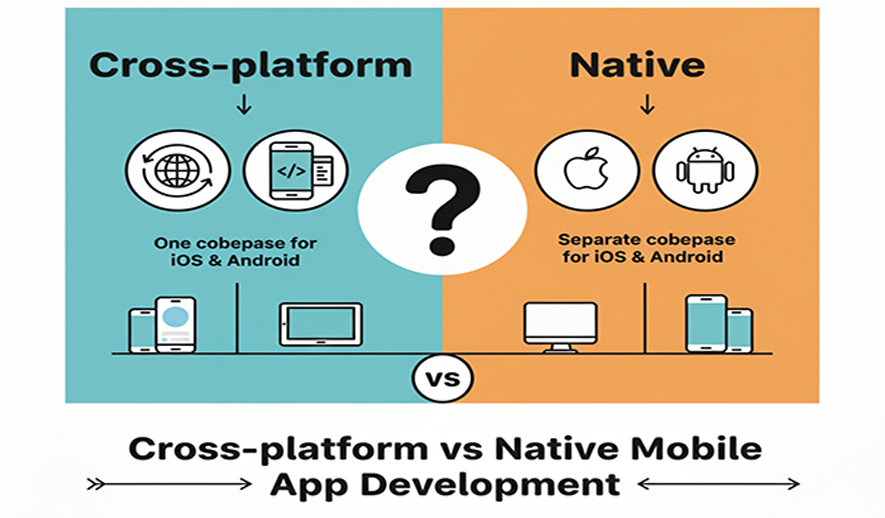
Cross-platform vs Native Mobile App Development
Deciding between native and cross-platform mobile app development depends on your project's budget, timeline, and performance requirements. Native apps offer superior speed and a platform-specific user experience but at a higher cost. Cross-platform apps are more cost-effective and faster to develop using a single codebase.
Native app development
Native apps are built specifically for a single mobile operating system, such as iOS (using Swift) or Android (using Kotlin).
Pros:
- Optimal performance: Native apps are faster and more efficient as they are optimized for a specific platform's hardware and software.
- Superior user experience (UX): They align perfectly with a platform's design guidelines, providing a seamless and intuitive interface.
- Full hardware access: Native apps can fully leverage device features like the camera, GPS, and sensors for a richer user experience.
- Enhanced security: These apps benefit from the built-in security features of the OS, which is crucial for sensitive data like banking information.
Cons:
- Higher development cost: You need separate teams and codebases for iOS and Android, which significantly increases cost and resources.
- Longer time-to-market: Developing two distinct apps means a longer development cycle compared to a single cross-platform app.
- Complex maintenance: Updates and bug fixes must be implemented and maintained separately for each platform.
Cross-platform app development
Cross-platform apps are built using a single codebase that is shared across multiple platforms, such as iOS and Android. Popular frameworks include Flutter, React Native, and Xamarin.
Pros:
- Reduced development cost: A single codebase allows for a smaller team and faster development, which can significantly cut costs.
- Faster time-to-market: With one code base, you can launch on both iOS and Android simultaneously, reaching a wider audience quickly.
- Easier maintenance: Updates and bug fixes can be applied to a single codebase, simplifying maintenance and ensuring consistency.
- Code reusability: A significant portion of the code is reusable, saving time on repetitive tasks.
Cons:
- Performance limitations: While modern frameworks have improved, cross-platform apps can still have slight performance lags, especially with heavy animations or complex functionality.
- Limited native features: Access to specific, newly released, or advanced device features might be delayed or require complex workarounds.
- Potential UX inconsistencies: While frameworks aim for consistency, achieving a pixel-perfect, platform-specific look can be challenging.
